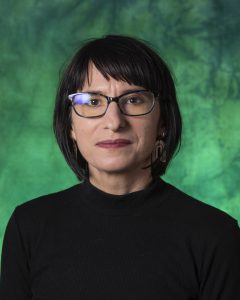 James Wetzel is Professor of Philosophy and Augustinian Chair at Villanova University. He also directs Villanova’s Augustinian Institute. We invited him to discuss comparative philosophy of religion as part of our “Philosophers of Religion on Philosophy of Religion” series.
James Wetzel is Professor of Philosophy and Augustinian Chair at Villanova University. He also directs Villanova’s Augustinian Institute. We invited him to discuss comparative philosophy of religion as part of our “Philosophers of Religion on Philosophy of Religion” series.
When I teach Villanova’s foundation course in philosophy—a course ambitiously named “Knowledge, Reality, Self”—I usually venture a bit of comparative philosophy of religion (though the “of religion” part is perhaps redundant in so heady a stew). For the last couple of tries, I have ventured a juxtaposition of Augustine’s dialogue on the teacher, De magistro, with Lao Tzu’s enigmatic wisdom teaching, the Tao Te Ching.
Augustine wrote De magistro not long after his return to Africa from Italy in 388 and not long before the death of his only child, his son Adeodatus, in 390. De magistro takes the form of a dialogue between father and son, and in the Confessions (conf. 9.6.14) Augustine swears that he doesn’t invent his son’s part. The boy’s voice, unforeseeably memorialized in De magistro, remains his own.
The Tao Te Ching comes out of the Warring States Period in ancient China—a time of great violence and volatility. Its authorship is generally attributed to Lao Tzu, but “Lao Tzu” likely just means “old man” or “old master”; it is not a proper name. The text is about a way that cannot be named, but, then again, there is an awful lot of talk there about The Tao.
It is tempting to compare the two works along the lines of a similar problematic, say the problem of communicability. At the start of De magistro, Augustine asks his adolescent son a potentially provocative question: “What do you think we want to accomplish when we talk?” (mag. 1.1). That could be a question about a difficult history. The father has, a couple of years prior, sent the boy’s mother away for the prospect of a better, more socially advantageous match. I wonder whether Augustine and Adeodatus ever talked about this, and if so, what would they have been hoping to accomplish? The same thing? But Adeodatus opts for the long view and answers for the ages. What we do, what any of us would want to do, is twofold: learn (discere) and teach (docere). For his part Augustine insists on the chasm between those two desiderata. He has us much preferring to be teachers of our own desire to being students of someone else’s. Maybe we have no real choice about this (natural?) preference, but then the divine teacher slips inside our solipsism and teaches us otherness. This is Augustine’s Christ, “the interior light of truth” (mag. 12.40).
If there is a problem of communicability in the Tao Te Ching, it doubtless has something to do with the Tao, or the intelligibility that seems so resistant to mapping. It isn’t by following the Tao that one gets from here to there; it is not that kind of guidance, if it is guidance at all. Here is how Stephen Mitchell, the great impresario of religious and poetic texts, translates the first four verses of the Tao Te Ching, the ones that declare, indirectly (sort of), what the Tao is:
The tao that can be told
is not the eternal Tao.
The name that can be named
is not the eternal Name.
Notice Mitchell’s contrast between small “t” tao, able to be named (pegged), and big “T” parent tao, or the tao that preempts naming as much as it grounds it. It is hard for me not to conclude, despite my best resistance, that big T tao is being set up as the superior tao.
Now compare Mitchell’s rendition with that of Ursula K. Le Guin, a literary figure of enormous verve. Same lines:
The way you can go
isn’t the real way.
The name you can say
isn’t the real name.
It is possible, no doubt, to read Mitchell’s rendition as a clarification of Le Guin’s folksier language. “The way you can go”: ah, yes, that is a tao, not the Tao. For the really real way, we will need to have access to something eternal as well as a purely intuitive grasp of what a name names. Buckle up.
But there is a cost to having Mitchell devour Le Guin. We lose the possibility that a way is not the real way simply because there is more than one way to go. Naming the real need not be an exclusionary practice. Name things, by all means, but keep your mind open to other practices of naming—until naming starts to ebb and flow, and the sea is calm.
My aim here is not to defend Le Guin’s Tao Te Ching against Mitchell’s, despite how it may be sounding. What interests me is the vivid contrast of their poetic sensibilities. Neither of them is a translator of the Tao Te Ching in the strict sense: neither knows ancient Chinese, and both are heavily dependent on Paul Carus’s 1898 mapping of the Tao’s ideograms onto English words and phrases. That makes Mitchell and Le Guin translators of translation.
As are most of us. I read Augustine in Latin; I read Lao Tzu in English. My knowledge of Latin is an advantage provided that I don’t confuse philosophy with literalization. For there is an irreducibly aesthetic component to philosophical reading and reception. This is what Mitchell and Le Guin, in their comparative brilliance, remind me of.
Comparative philosophy of religion is not then just a matter of aiming foreign resources at a familiar problematic. It is also about the question that shows up between the lines.
So what happens when the divine meets you from within, wrecks your distinction between inner and outer, greens your knowledge, and leaves you, for a time, at peace with your desires?
Maybe nothing. Maybe that is the point.
References
Augustine, De magistro, ed. Klaus-Detlef Daur, CCSL 29, Turnholt: Brepols, 1970.
Stephen Mitchell, tao te ching, New York: Harper & Row, 1988.
Ursula K. Le Guin, Lao Tzu: Tao Te Ching, Boulder: Shambala Publications, 2019.

